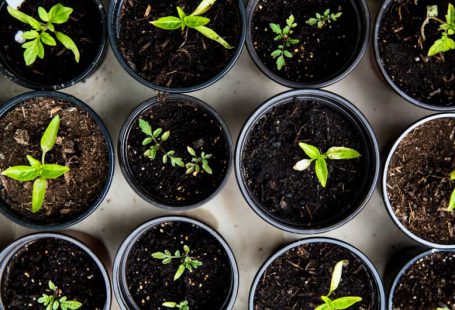Aquaponics is revolutionizing the way we grow food by merging aquaculture (fish farming) and hydroponics (soilless plant cultivation) into a symbiotic system that maximizes efficiency and sustainability. This innovative method of food production has gained popularity in recent years due to its numerous environmental and economic benefits. By creating a closed-loop system that mimics natural ecosystems, aquaponics offers a promising solution to the challenges facing traditional agriculture. Let’s delve deeper into how aquaponics works and why it is considered a crucial step towards sustainable food production.
The Basics of Aquaponics
At the heart of an aquaponics system are two main components: fish and plants. The process begins with fish living in a tank, producing waste rich in nutrients such as ammonia. This nutrient-rich water is then pumped into grow beds where plants, typically vegetables and herbs, are cultivated. Beneficial bacteria in the grow beds convert the ammonia into nitrates, which serve as a natural fertilizer for the plants. In turn, the plants filter the water, returning clean water back to the fish tank. This continuous cycle creates a harmonious relationship between the fish and plants, resulting in a self-sustaining ecosystem.
Advantages of Aquaponics
1. Water Conservation: Aquaponics uses up to 90% less water than traditional soil-based agriculture due to the recirculating nature of the system. The water in the fish tank is continuously reused, and only minimal evaporation and plant transpiration occur. This makes aquaponics an ideal method for regions facing water scarcity or drought conditions.
2. Space Efficiency: Aquaponics systems can be set up in a relatively small area, making them suitable for urban environments or areas with limited land availability. By vertically stacking grow beds or utilizing aquaponic towers, farmers can maximize production in a compact space.
3. Nutrient-Rich Produce: The natural fertilization process in aquaponics results in plants receiving a balanced blend of essential nutrients, leading to healthier and more nutrient-dense produce. Additionally, the absence of chemical pesticides or synthetic fertilizers makes aquaponically grown food a safer and more sustainable option for consumers.
4. Energy-Efficient: Compared to traditional farming methods, aquaponics requires less energy input, particularly in terms of irrigation and fertilization. By harnessing the power of natural processes, aquaponics minimizes the need for external energy sources, reducing overall operational costs.
Challenges and Considerations
While aquaponics offers numerous advantages, it also presents challenges that require careful planning and management. Maintaining water quality, managing nutrient levels, and preventing disease outbreaks in fish are crucial aspects that aquaponic farmers must monitor closely. Additionally, initial setup costs and the learning curve associated with operating an aquaponics system can be barriers for newcomers to the practice.
Future Prospects and Outlook
Despite these challenges, the future of aquaponics looks promising as more farmers and researchers explore innovative techniques and technologies to enhance system efficiency and productivity. Integrating renewable energy sources, implementing automation and monitoring systems, and experimenting with new crop varieties are some of the avenues being explored to further advance aquaponics as a sustainable food production method.
In conclusion, aquaponics represents a significant step towards sustainable and innovative food production by harnessing the power of natural ecosystems to create a closed-loop system that benefits both plants and fish. With its water-saving capabilities, space efficiency, and nutrient-rich produce, aquaponics holds the potential to transform the way we grow food and address the challenges of modern agriculture. As we continue to refine and expand aquaponic practices, the vision of a more sustainable and resilient food system is well within reach.





